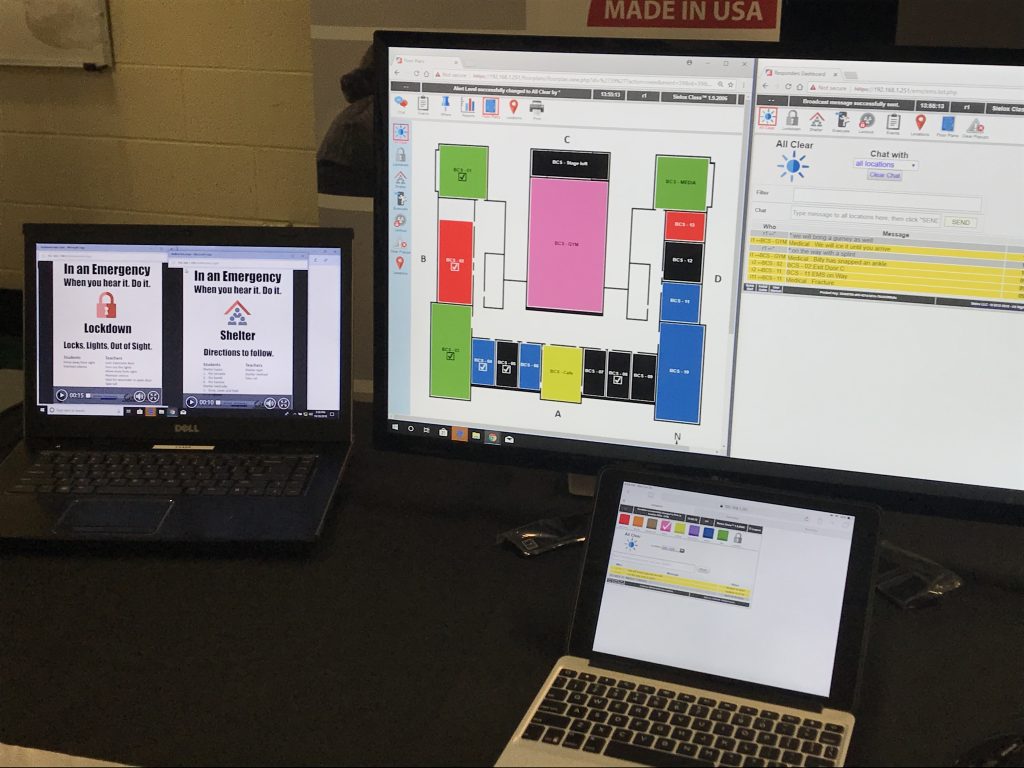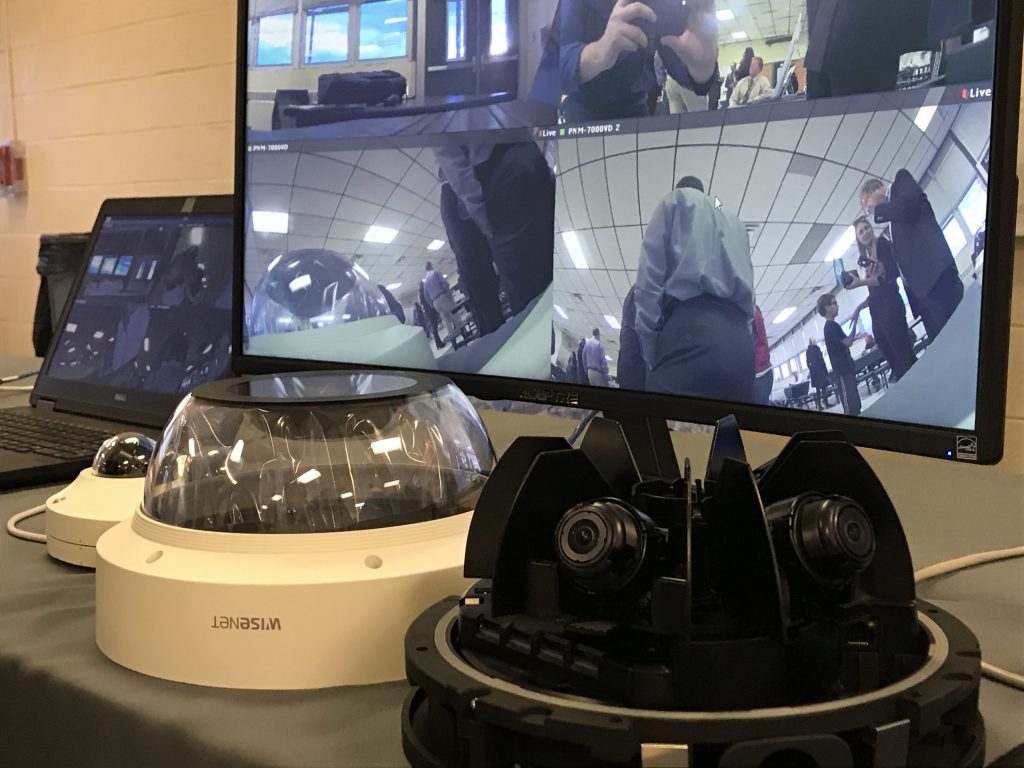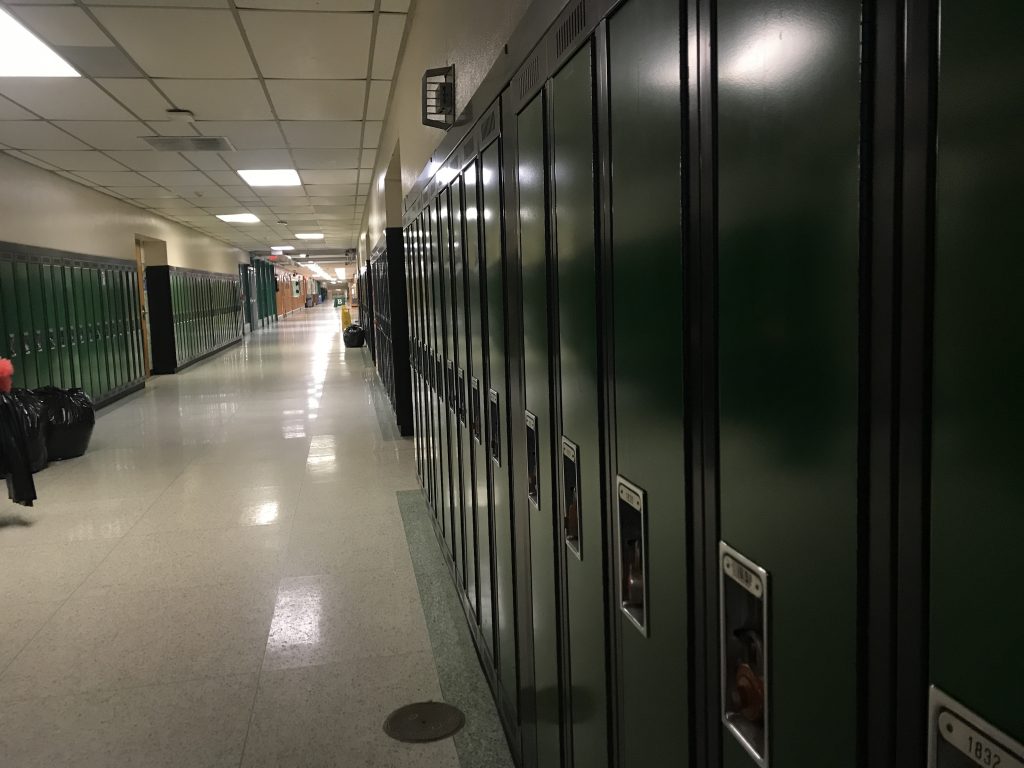When schools are built these days, security is the first consideration when planning the layout and cohesiveness of the building. But in the 1950s, it wasn’t uncommon for students to bring shotguns to the newly-built Brick Township High School for some after-school hunting.
These days, of course, schools are a gun-free zone – at least ideally. In the wake of the Feb. 14 mass shooting at a high school in Parkland, Fla., Brick officials saw a need to beef up not only the physical barriers to enter the district’s dozen school buildings, but leverage technology to thwart whatever tactics an invader might use in a quest to harm students.
Both aspects of the plan will come together in a referendum that will ask voters to approve $12.5 million in borrowing to fund the improvements. The jury is out on whether the measure will pass. Brick has rejected the majority of referendum questions in the past, and this time, news broke over the summer that the state would cut more than $20 million in funding to the district and require maximum tax increases each year for the next seven. But school officials counter that the financial impact of the plan is affordable – $15.77 per year for a resident who owns a home of average value in town – and the bonds would allow all of the district’s buildings to be outfitted with protection at one time rather than piecing together projects over the course of the next decade or longer.
|
|
This week, the district held a “referendum fair” at Brick Township High School. The building improvements, which mainly consist of installing mantraps – commonly known as air locks – at the entrance of each school building, were detailed on posterboards. But the technological side was on display too, giving residents a first-hand look at how teachers, administrators, EMTs and police officers could silently communicate vital information in the event of an active shooter or other emergency.
At the center of the district-wide system that is being proposed is a software module called CLASS, short for Crisis Lockdown Alert Status System. The technology was developed by Sielox, a tech security firm based in Camden County. If the referendum passes muster with voters, the system would be installed and integrated into a wide network of cameras by Johnston Communications, based in Bergen County.
“Teachers will have this on their mobile devices or they can use a touchscreen on their desktop,” said George Sode, of Johnston, giving a demonstration of how the system would operate.
The CLASS system is both comprehensive and simple. Teachers and administrators would have access a view of their building on a desktop, tablet or mobile device. The district would choose color-coded options so staff could quickly alert their supervisors and law enforcement about any problems. For example, a teacher could press a red bottom in his or her classroom and an alert would be sent immediately to the building principal and law enforcement.
The software communicates with smart locks across the school.
“If they have the authority, they can hit that lockdown button and it will lock all the doors and send out an alert immediately,” said Sode. “Everyone will still be able to get out of the classroom, but only law enforcement will have a special card where they’ll be able to get in.”
Likewise, police officers in Brick would be outfitted with a mobile app in which they can see exactly what school employees are reporting, from the color-coded map of the status of each classroom, to text messages that staff can quickly type in an emergency to update first responders.
“It’s actually a very simple system, and that’s by design,” said Jon VanDiver, vice president of sales for Sielox.
Based on what teachers and staff report during an emergency, the software would allow police to tap into the school’s network of cameras, which would be placed at strategic locations, said Sode.
The CLASS system can also be used in situations other than the worst case scenario of an active shooter on the premises. Teachers, for example, could be instructed to confirm that all of their students are safely in their homerooms each morning by tapping an “all clear” color code. The system can also be used to help if a student is experiencing a medical issue.
“Say a student needs an epi-pen – the teacher can press the button and put in a message and the nurse gets dispatched immediately,” said Sode.
The software and hardware integration, as well as the wide network of cameras, makes up about $2.2 million of the $12.5 million referendum, said VanDiver. The remainder of the money would go toward the “mantraps,” which would create a physical barrier between the entrance of each school building and another door further inside. Once inside the mantrap, visitors would turn over their driver’s license, which would be scanned against a database of sex offenders and other individuals who are not allowed on school property. That portion of the software, called Hall Pass, is useful in preventing kidnappings by non-custodial parents, its designers say.
As with any expenditure of taxpayer dollars, especially given New Jersey’s highest-in-the-nation property tax burden, cost is always a consideration. Combined with the funding cuts announced over the summer, district officials are hoping their presentations to parents and members of the community will help voters make an informed decision as to whether the project is worth the slight tax increase.
“I think the security measures that are in place now aren’t as automated,” said Superntendent Gerard Dalton, citing the automatic door-locking function as one of the most powerful tools that would be available to staff. “When you look at the door locking system, what that allows us to do in an immediate way – not having people fumbling in a crisis – we’ll have a much greater scale of responsiveness.”
Dalton also addressed concerns over funding.
“When you have state funding cuts, that says a district like ours would not be able to take this on except without a referendum,” he said. “A referendum allows the voters to choose if that’s how tax dollars should be spent, separate and apart from the funding cuts.”
The referendum vote will be held on Election Day, Nov. 6.

Advertisement

Police, Fire & Courts
Grand Jury Indicts Point Pleasant Man, Once a Fugitive, for Attempted Murder











